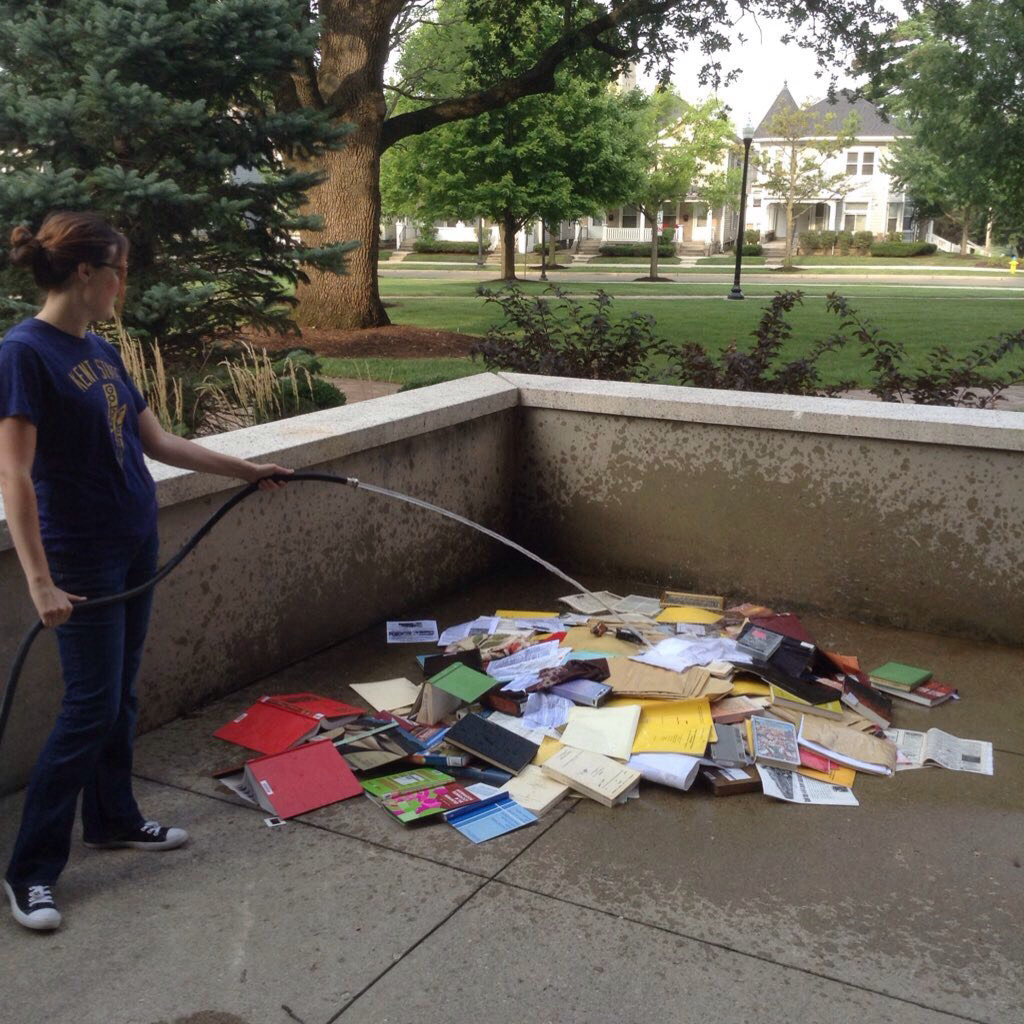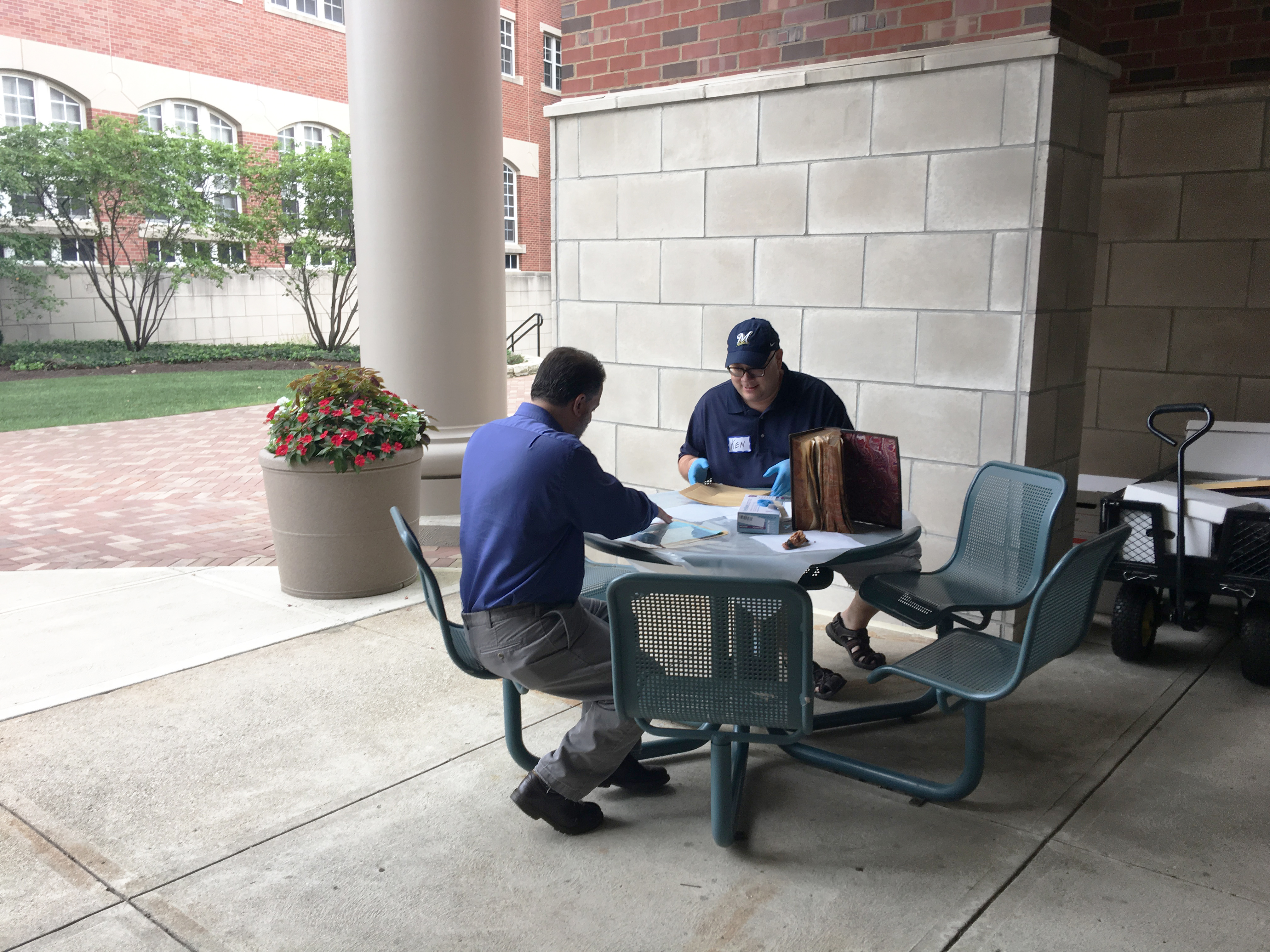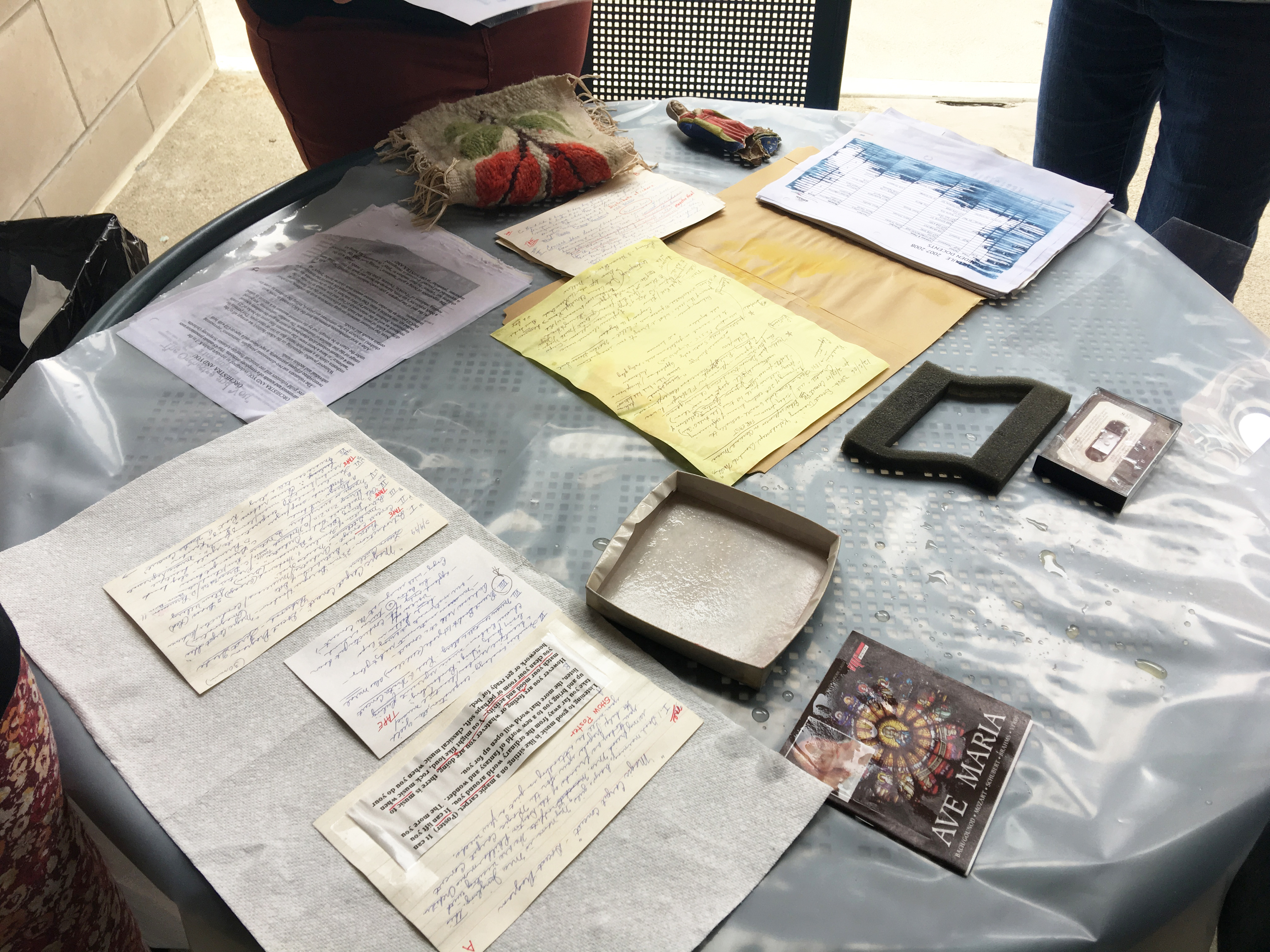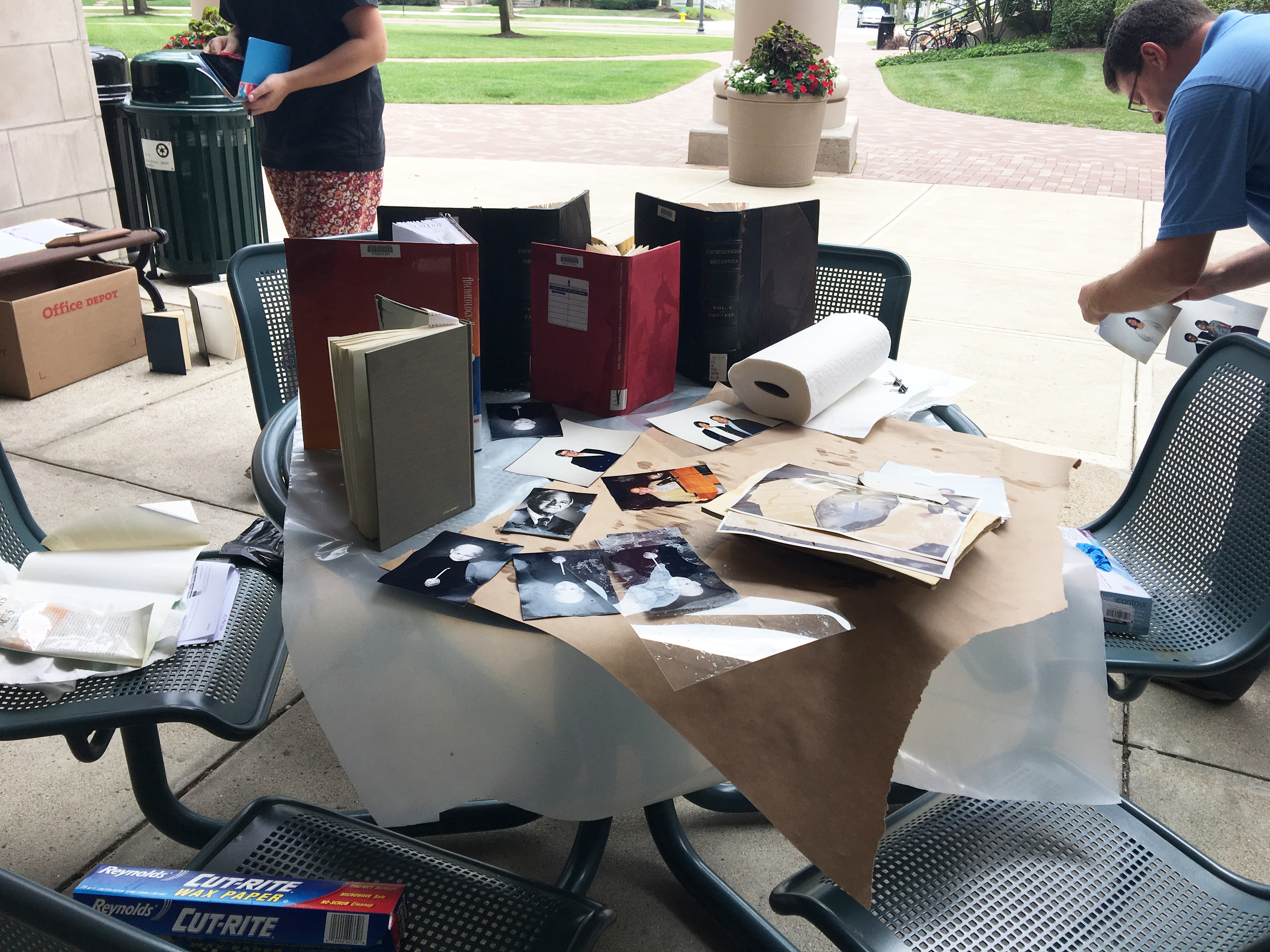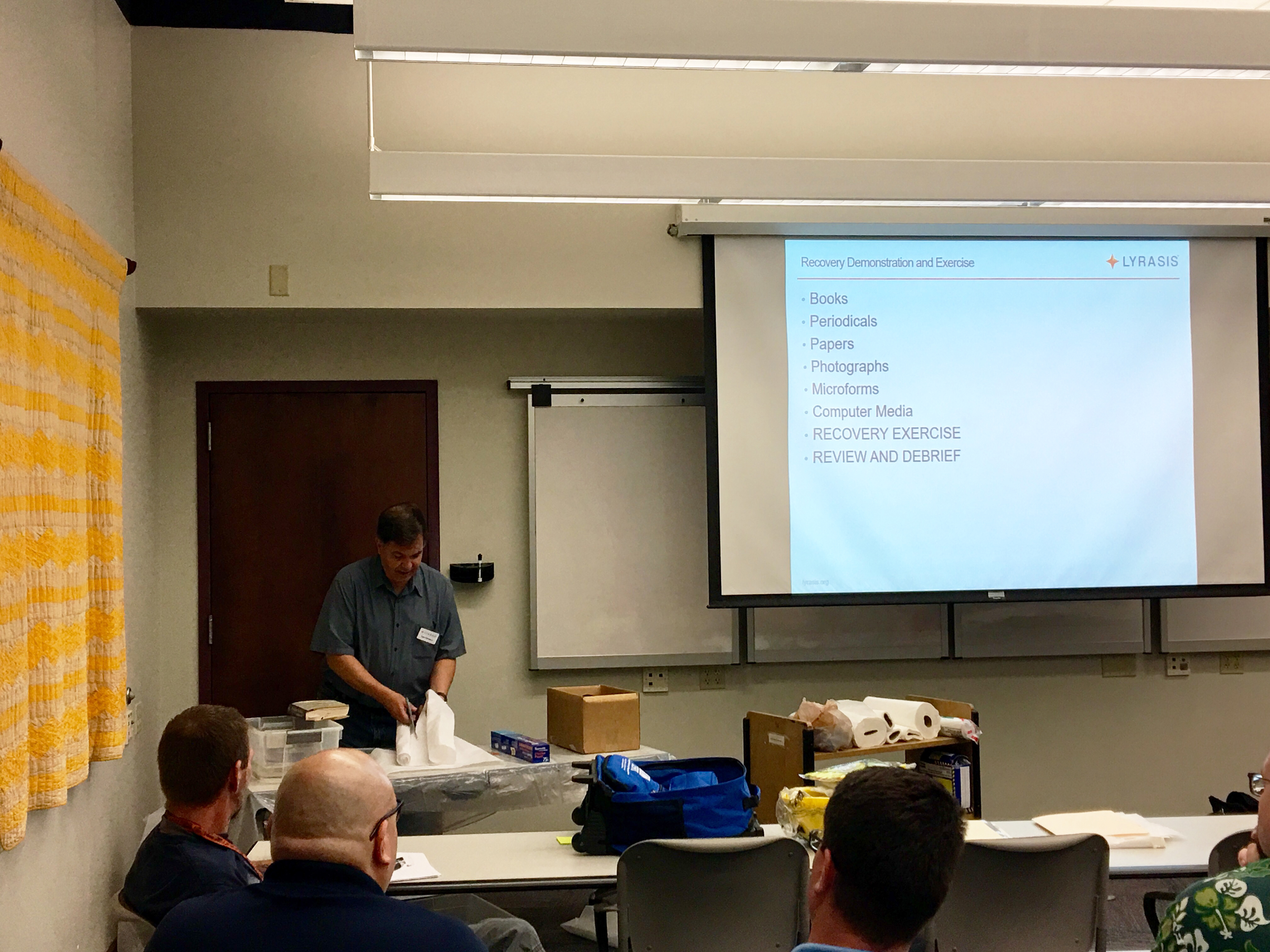Blogs
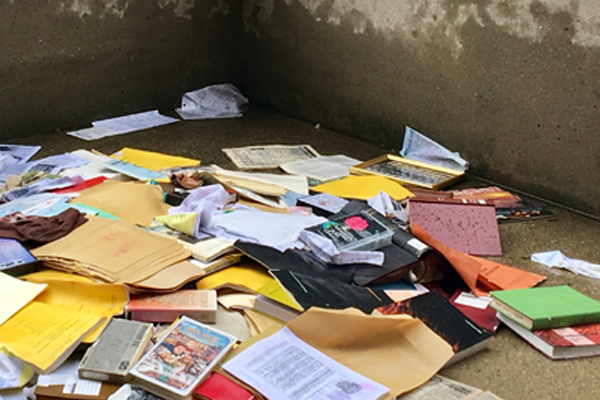
In Case of Wet Books
By Olivia Gillingham, Library Specialist in the Marian Library
Tour groups visiting Roesch on August 11th may have been surprised to be greeted with what seemed like the antithesis of library work: a pile of sopping wet books, photos, and other archival materials thrown this way and that on the ground outside the library. Watching with amusement from inside, our group of twenty-five colleagues could almost see the thoughts running through their minds as they observed the soggy mess. Is it a joke? A modern art sculpture?
The heap of unfortunate books was, in fact, part of an exercise in a disaster preparedness workshop by Tom Clareson, Senior Digital & Preservation Services Consultant for LYRASIS. Throughout the day we received countless important tips from Tom, from knowing the nitty gritty of your institution’s insurance policy to the benefits of collaboration with emergency responders. Some highlights included learning how to perform a building survey and facilities assessment to plan for and limit damage, and completing a risk assessment exercise in which we rated Roesch’s vulnerability to a number of destructive forces and learned steps we could take, both in advance and afterwards, to mitigate possible harm to materials. In addition to new information, the workshop offered everyone the opportunity to review existing disaster plans, and to evaluate areas that are well-developed and others that could be improved upon through further planning, training, and collaboration.
Toward the end of the workshop, the group headed outside to address the pile of materials that had been soaking for about seven hours. After one final spray-down with the hose, the scene resembled the library version of hospital triage. Our smaller teams swarmed around the pile, grabbing a range of materials to start practicing our new skills. Identifying salvage priorities, we prepared and wrapped soaked books for vacuum freeze drying, interleaved paper towels with files in archival folders, and strung up photographs, slides, and single pages for air drying. By the time we finished, our tables were filled with salvaged materials and our brains with new information.
Though disasters are inevitably unpredictable as far as the damage they will cause, at the end of the day I think everyone feels more confident in their preparedness to deal with damaged materials, now armed with new knowledge, techniques, and hands-on experience. The UD community can rest assured that their books are in good hands!

